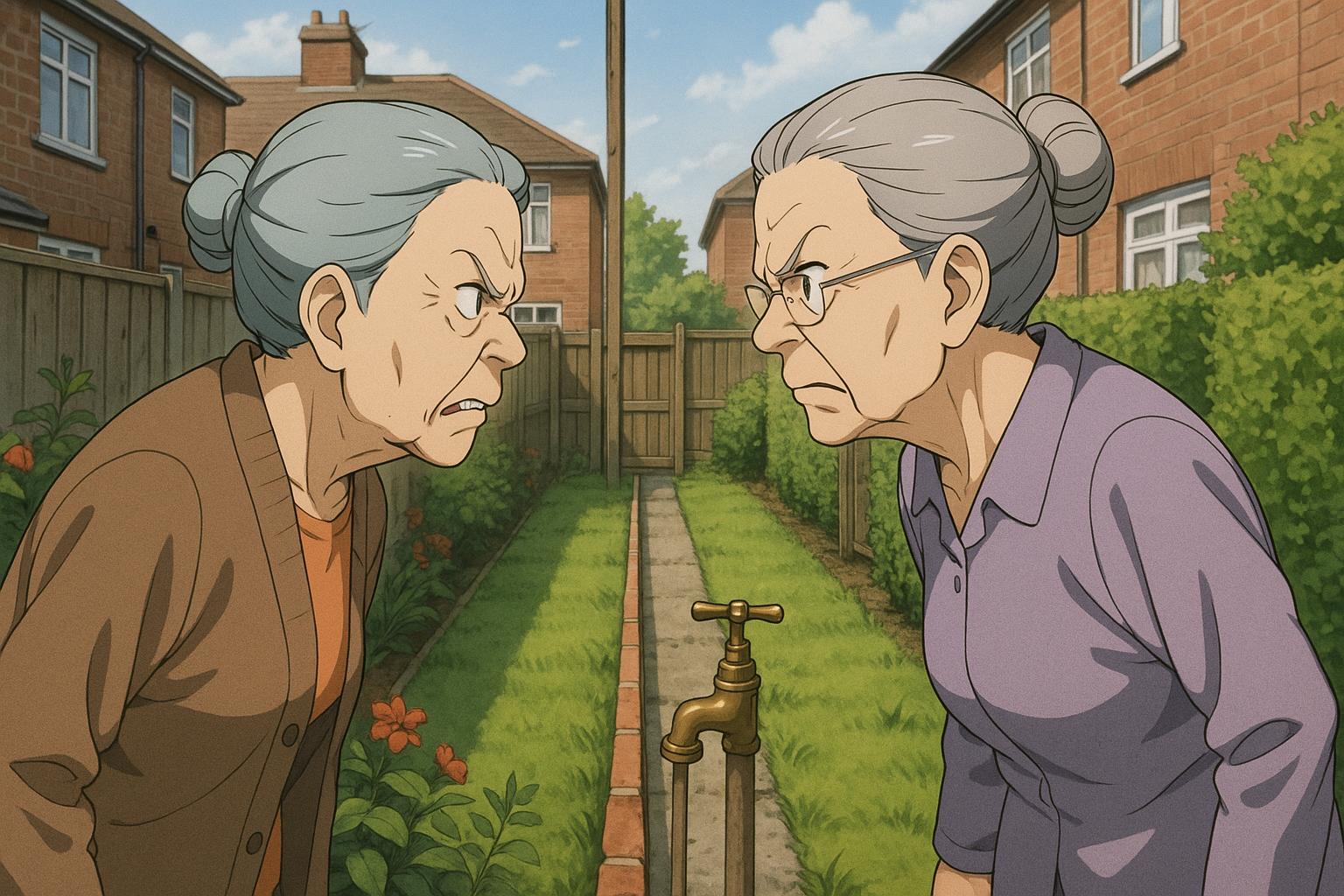The ongoing legal battle between two neighbours in East London has escalated into a staggering £250,000 dispute, primarily revolving around a narrow strip of land and a garden tap. Christel Naish, an 81-year-old pensioner, asserts that the tap and pipe belonging to her neighbour, Dr Jyotibala Patel, encroach upon her property, leading to costly litigation that some legal experts deem absurd.
Despite a ruling last year in Mayors and City County Court that favoured Dr Patel—who, along with her husband Vasos Vassili, purchased their property for £450,000—Naish is now pursuing her case in the High Court. This continuation comes despite warnings that should she prevail, her expenses could balloon to an estimated £500,000, which exceeds the market price of Dr Patel’s home. The pressure of such financial implications showcases the untenable nature of boundary disputes, particularly when they involve outdated principles of property law.
The legal contention stems from a boundary dispute arising from structural changes made to the properties decades ago. In 1983, the previous owners of Dr Patel's home constructed an extension that altered the original gap's width, thereby complicating the boundaries. During the county court proceedings, Judge Stephen Hellman ruled that the separating wall of Naish's property marked the definitive boundary, granting ownership of the strip in question to Dr Patel and Mr Vassili. The judge expressed a hope that this judgement might help alleviate tensions, urging the parties to reconcile and foster neighbourly relations.
Boundary disputes are not unique to this case; they are common across property ownership, often dragging on for years due to procedural complexities and insufficient evidence. Courts may appoint local commissioners to assist with boundary verifications, although judges are typically hesitant unless the evidence presented by the parties is notably weak. Legal practitioners stress that accurate land demarcation and thorough documentation are vital, as misalignment can lead to protracted legal battles and escalating costs.
As Naish continues her appeal, which the High Court has estimated could accumulate an additional £30,000 in legal fees, the debate over the true cost of neighbourly disagreements comes into sharp focus. Senior judge Sir Anthony Mann remarked that the financial toll of this dispute is indicative of how litigation over seemingly trivial issues can tarnish the integrity of the legal system. He articulated a profound critique of the extent to which the parties are willing to go over what appears to be a minor encroachment.
Ultimately, this case encapsulates the broader challenges of boundary and land ownership disputes, which can result in fractures not just in neighbourly relations but also within the community. Instead of seeking resolution, participants often find themselves mired in financial hardship and escalated hostility.
As the case unfolds, the implications of this legal battle may resonate far beyond the properties of Naish and Patel, serving as a stark reminder of the potential costs and stresses involved in property ownership and the importance of clear boundaries.
Reference Map
- Paragraphs 1, 2, 3, 4, 5
- Paragraph 6
- Paragraph 6
- Paragraph 6
- Paragraph 6
- Paragraph 1, 6
Source: Noah Wire Services
